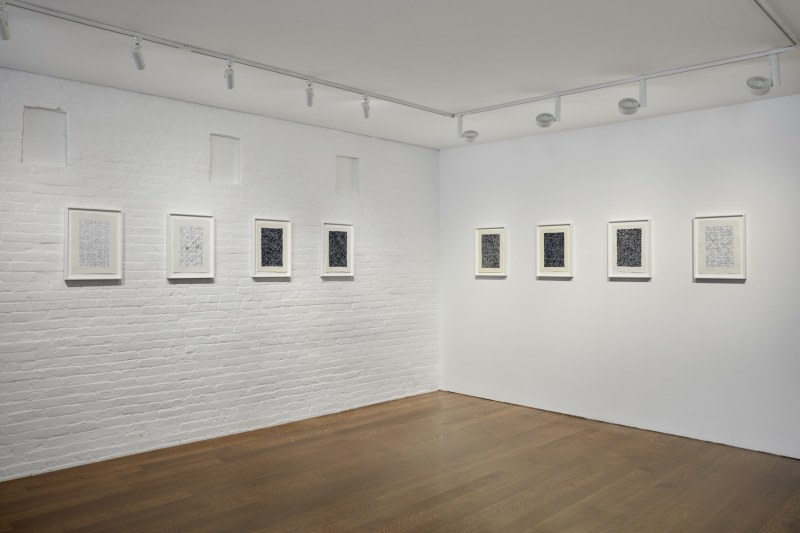Ding Yi: Appearance of Crosses
Ding Yi has been making abstract paintings using crosses and grids since the late 1980s. The cross, whether a ‘+’ or an ‘x’ with thematic variations, is a motif that the artist has declared a formal mark without meaning, in order to emphasise his rationalist approach to painting. The late works on wood boards reflect Ding Yi’s continuing dialogue with China’s fast-paced development in the last three decades. The intensity and dynamism of the rapid urbanisation is embodied in the interlacing woodcuts and brushworks. Whether predominantly black, paired on tartan, or elaborated in intense fluorescent colours, all works bear the title Appearance of Crosses with a date.
In traditional Chinese ink wash painting, painters use a group of texture brushstrokes or dabs called cun to give texture, volume or surface to landscapes. On Ding Yi’s large wood boards, the carving marks adapt like the fupi cun strokes, so called because the brush creates the effect of woodcut with a axe, a characteristic of paintings from Southern Song Dynasty (1127–1279). The smaller works on paper also integrate techniques of painting and calligraphy; a calm black / white is used first to settle the tone; after the forms are outlined, texture strokes are used to give character to the form, given a suggestion of its tactile surface and painterly qualities. Multiple layers of colour are rendered precise yet sensuous, providing a summery visual impression of spatial depths beyond painted surface.









